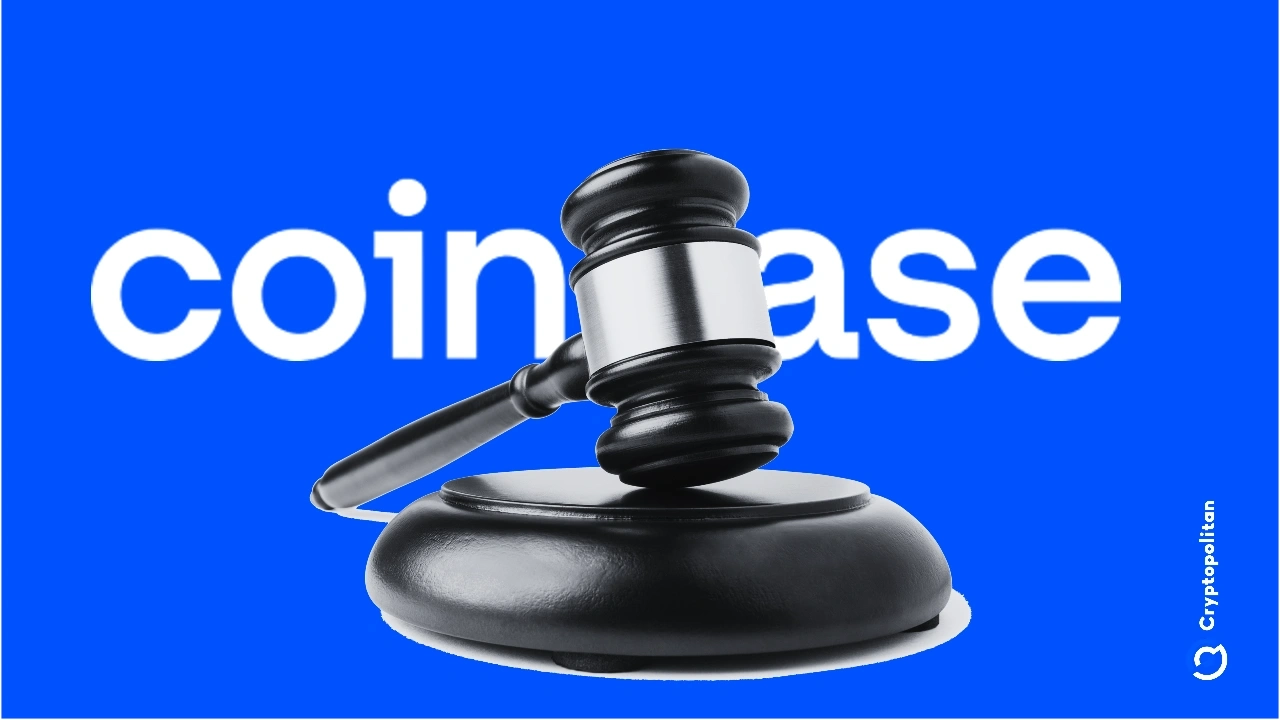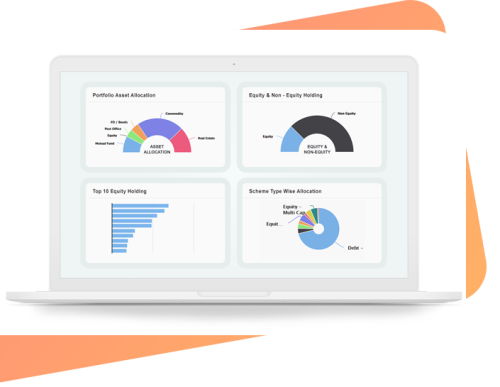Finance
The Growth of Financial Education Programs Empowering

In today’s fast-paced world, financial literacy has become an essential skill. The rising complexity of financial products, the surge in digital banking, and the importance of personal financial management have made it crucial for consumers to gain a better understanding of how to handle their finances. In response to these growing needs, financial education programs have emerged, offering individuals the tools and knowledge to make informed financial decisions. This article explores the growth of financial education programs, their impact on empowering consumers, and the key elements driving their success
1. Introduction to Financial Education
Financial education refers to the process of enhancing financial literacy through formal or informal programs. It equips individuals with the knowledge needed to make sound financial decisions, such as budgeting, saving, investing, and understanding financial risks. Over the last few decades, the focus on financial education has grown significantly as societies and economies become increasingly reliant on personal financial responsibility.
Financial education programs are designed to provide practical guidance, helping individuals navigate complex financial landscapes and avoid pitfalls such as excessive debt or poor investment choices. These programs often cover a wide range of topics, from basic money management to advanced investment strategies.

Image by: https://money finance gold.com
2. The Rising Importance of Financial Literacy
Financial literacy is no longer a luxury; it’s a necessity. With increasing access to credit, the proliferation of financial products, and the shift toward digital banking and payments, individuals are now faced with more financial decisions than ever before. Unfortunately, many people struggle with understanding these financial products and how they work, leading to debt accumulation, poor saving habits, and insufficient retirement planning.
A lack of financial literacy can have dire consequences on individuals’ well-being. Research shows that individuals who are financially literate tend to have lower levels of debt, higher savings rates, and a greater sense of financial security. Consequently, financial education programs have become an essential tool for mitigating these risks and ensuring that consumers are empowered to make better financial decisions.
3. The Role of Financial Education Programs
Financial education programs are designed to bridge the gap between consumers’ financial needs and their understanding of financial concepts. These programs are offered by various institutions, including governments, educational institutions, nonprofit organizations, and financial institutions. Their goal is to provide individuals with the knowledge and skills they need to manage their money effectively.
Some of the key areas covered in financial education programs include:
- Budgeting and money management
- Debt management and credit understanding
- Investment and retirement planning
- Risk management and insurance
- Taxation basics
The format of these programs can vary, ranging from in-person workshops and seminars to online courses, mobile apps, and interactive learning platforms. The rise of technology has further expanded the accessibility of financial education, allowing more people to engage with these resources on their own time.
4. Key Elements of Successful Financial Education Programs
Not all financial education programs are equally effective. The success of a program depends on several key factors, including:
- Relevance: Programs must address the specific financial challenges and needs of the target audience, such as saving for retirement or managing student loans.
- Accessibility: Financial education should be easily accessible to everyone, regardless of their background or location. This means offering a variety of delivery methods, including online resources, mobile apps, and in-person workshops.
- Engagement: Engaging content, interactive tools, and real-life scenarios help learners better understand and retain financial concepts.
- Customization: Financial education programs should cater to the unique financial situations of individuals, whether they are young adults just starting out or retirees managing their savings.
- Follow-Up Support: Continuous support and resources ensure that participants can apply what they’ve learned to real-life financial decisions.
Successful programs focus not only on imparting knowledge but also on changing financial behaviors and mindsets, ensuring that individuals feel empowered to take control of their financial futures.
5. The Global Expansion of Financial Education Initiatives
Around the world, governments, financial institutions, and educational organizations are recognizing the importance of financial literacy. As a result, there has been a marked increase in the number of financial education initiatives globally. For example, the U.S. government has implemented initiatives such as the Financial Literacy and Education Commission, which promotes financial education through public-private partnerships.
Similarly, in Europe, organizations like the OECD are actively promoting financial literacy among member states. In emerging economies, such as in Africa and Asia, financial education programs are often linked to broader financial inclusion initiatives, aimed at bringing banking services to underbanked populations.
These global initiatives reflect the growing recognition that financial education is essential for promoting economic stability and reducing inequality. Countries that have invested in financial education have reported improvements in financial decision-making, higher savings rates, and reduced debt levels among their citizens.
6. Impact on Consumer Behavior and Financial Empowerment
Financial education programs have had a positive impact on consumer behavior. Studies have shown that individuals who participate in such programs are more likely to engage in positive financial behaviors, such as saving for emergencies, avoiding high-interest debt, and investing in retirement accounts.
Moreover, financial education programs empower consumers by providing them with the tools and confidence to make informed financial decisions. This empowerment is particularly important in today’s financial landscape, where consumers are bombarded with complex products and services that can easily lead to confusion or exploitation without proper knowledge.
Empowered consumers are more likely to take charge of their financial futures, leading to greater financial security and reduced reliance on credit or social welfare programs.
7. Challenges and Limitations of Financial Education Programs
Despite their benefits, financial education programs are not without challenges. One of the main limitations is that financial education alone may not be sufficient to change behavior. Financial decisions are often influenced by emotional, social, and economic factors that cannot be addressed through education alone.
Additionally, some financial education programs may not be accessible to everyone, especially in low-income communities or rural areas. This can perpetuate financial inequality, as those who need the most help may not have access to the resources they need.
Another challenge is the complexity of the financial system itself. Even with financial education, some consumers may still struggle to understand complex financial products, such as mortgages or insurance policies. Therefore, it is essential for financial education programs to be designed in a way that simplifies these concepts for everyday consumers.
8. The Future of Financial Education
Looking ahead, the future of financial education is promising. With the advancement of technology, financial education programs are becoming more interactive, personalized, and accessible. Mobile apps, gamification, and AI-driven financial advice are some of the tools that are making financial education more engaging and effective.
Furthermore, there is increasing recognition of the need for financial education at a young age. Many schools are now incorporating financial literacy into their curricula, ensuring that students are equipped with the financial skills they need to succeed in adulthood.
As financial education programs continue to evolve, they will play an increasingly important role in promoting financial well-being and empowering consumers to navigate the complexities of modern finance.
Comparative Analysis Table: Financial Education Program Impact
| Aspect | Before Financial Education | After Financial Education |
|---|---|---|
| Savings Rate | Low to moderate savings, with a focus on consumption. | Increased savings rate, with greater focus on long-term planning. |
| Debt Management | High levels of debt, often due to lack of understanding of interest rates. | Improved debt management, lower levels of high-interest debt. |
| Investment Behavior | Limited or no investment in retirement or savings plans. | Higher participation in investment products, such as retirement accounts. |
| Financial Confidence | Low confidence in managing personal finances. | Increased confidence, leading to proactive financial decisions. |
| Emergency Fund Preparedness | Little to no emergency savings. | Higher rates of emergency fund creation and savings. |
Analysis Table: Key Factors in Effective Financial Education Programs
| Factor | Importance | Description |
|---|---|---|
| Relevance | High | Ensures the program addresses specific needs of the target audience. |
| Accessibility | Medium | Makes the program available to all individuals, regardless of location or background. |
| Engagement | High | Keeps participants motivated and helps retain information. |
| Customization | High | Tailors content to the unique financial situations of participants. |
| Follow-up Support | Medium | Provides ongoing resources and support to reinforce learning. |
By examining the growth of financial education programs, we can see their vital role in helping individuals navigate the complex financial world. As these programs continue to evolve and expand, they will provide even greater opportunities for consumers to achieve financial independence and security.
Finance
How to File a Complaint with Coinbase: Call +1-858-765-8486

Introduction
Filing a complaint with Coinbase is simple when you know the right contact methods. Whether you’re dealing with delayed or cancelled Wallet transactions, denied access, refund issues, or other account problems, speaking with a live representative ensures your concerns are resolved quickly. Coinbase offers several ways to get help, including their main customer service number 1-800-Coinbase, and the direct line +1↯858↯765↯8486, available 24/7. This guide walks you through how to contact Coinbase, the types of issues they handle, and tips for effective communication.
Why Contacting Coinbase Customer Service Is Important
Coinbase handles millions of accounts and transactions every day. While the platform is generally reliable, issues can arise that require human assistance. Contacting customer service is important because:
- Prompt Resolution: Live representatives can quickly address urgent complaints.
- Personalized Support: Complex issues like refund disputes or denied Wallet access require human guidance.
- Technical Assistance: Agents help troubleshoot problems with transactions, app errors, or login issues.
- Accurate Communication: Explaining issues directly to a live person reduces misunderstandings compared to automated systems.
- Peace of Mind: Knowing that someone is actively helping your case reduces stress and frustration.
By reaching a live agent, users can solve their problems efficiently and with confidence.
Phone Contact Options for Filing Complaints
Coinbase provides multiple phone numbers to ensure users can always reach help.
1. Main Customer Service Number: 1-800-Coinbase
This toll-free number is available for customers across the United States. It connects you to trained representatives who can handle complaints, refund requests, cancellations, and other issues.
2. Direct Line: +1↯858↯765↯8486
This number connects you directly to a live representative 24/7. It is ideal for urgent complaints or when you need immediate guidance on technical or account-related issues.
Tips for a Successful Phone Call
- Keep your account information ready, including email, username, and recent transactions.
- Clearly explain the problem and include any error codes or messages.
- Take notes during the call, including reference numbers or agent names.
- Be patient, as the representative may need time to investigate your complaint thoroughly.
Alternative Methods to File a Complaint
If calling is not convenient, Coinbase also offers other ways to raise complaints:
- Live Chat Support: Available on Coinbase’s website, live chat connects you with a representative in real time for faster resolutions.
- Email Support: Sending a detailed email with all relevant information allows Coinbase to review and respond with instructions or resolutions.
- Help Center Resources: FAQs and troubleshooting guides can assist with common complaints before contacting support.
Using these options provides flexibility and ensures that every user can get help in the way that works best for them.
Common Complaints Handled by Coinbase Customer Service
Live representatives are trained to handle a variety of issues, including:
- Delayed or Cancelled Wallet Transactions: Assistance with payments that do not process correctly.
- Denied Access or Login Issues: Support for account lockouts or verification problems.
- Refund Requests: Guidance on how to request refunds for failed or cancelled transactions.
- Technical Problems: Errors in the app, website, or software integrations.
- Billing and Account Questions: Help with subscriptions, charges, and transaction records.
Having a live person handle these complaints ensures accuracy and faster resolution compared to automated solutions.
How to Prepare Before Filing a Complaint
Preparing before contacting Coinbase makes the process smoother and more efficient:
- Gather all relevant information about the issue, including dates, amounts, and transaction IDs.
- Note any steps you have already taken to resolve the problem.
- Be ready to describe the problem clearly and concisely.
- Keep a record of the conversation, including names of representatives and reference numbers.
- Be polite and patient, as clear communication helps representatives resolve complaints faster.
Proper preparation can reduce the number of follow-up calls and ensures your complaint is handled efficiently.
When to Reach Out to Coinbase Support
You should contact Coinbase support when:
- A Wallet transaction is delayed, cancelled, or shows an error.
- You experience login issues, account verification problems, or denied access.
- You need a refund or want to dispute a charge.
- You encounter technical errors in the app or website.
- You have urgent questions about billing, fees, or account settings.
Contacting a live representative ensures your complaint receives immediate attention, especially for urgent matters.
Benefits of Speaking to a Live Representative
Reaching a live agent for your Coinbase complaint has multiple benefits:
- Instant Communication: Speak directly to someone who can act immediately.
- Step-by-Step Guidance: Agents can walk you through troubleshooting or account updates.
- Accurate Resolution: Human support reduces misunderstandings that often happen with automated systems.
- Confidence: You know your complaint is being handled seriously.
- 24/7 Availability: Coinbase provides around-the-clock assistance for urgent issues.
Using live support increases the likelihood of a fast and effective resolution.
Conclusion
Filing a complaint with Coinbase is straightforward when you know the right contact methods. Whether calling 1-800-Coinbase or +1↯858↯765↯8486, you can reach a live representative 24/7 for assistance with Wallet issues, cancellations, refunds, technical problems, and more. Alternative support methods like live chat or email are also available for convenience. Preparing your account information, describing the issue clearly, and following the representative’s instructions ensures your complaint is resolved quickly and effectively. Speaking to a live person guarantees accurate solutions, peace of mind, and prompt service for all Coinbase users.
Finance
Reaching a Live Representative 1-858-765-8486 at Coinbase Wallet

Introduction
Reaching a live representative at Coinbase Wallet® can make all the difference when dealing with account issues, technical problems, or transaction concerns. Whether you need help with bookings, cancellations, refunds, or technical support, speaking directly with an agent ensures your problems are handled quickly and efficiently. Coinbase Wallet® provides multiple contact options, including the phone numbers 𝟏-858-765-8486 and 1-800-Coinbase Wallet® (US/OTA), available 24/7. This guide walks you through every contact method so you can resolve your issues with ease.
Having access to a live representative at Coinbase Wallet can make all the difference when dealing with account issues, technical problems, or transaction concerns. Whether it’s a delayed payment, Wallet access problem, refund request, or any other issue, speaking directly with an agent ensures your concerns are addressed quickly. Coinbase Wallet offers multiple contact options, including the main line 1-858-765-8486, available 24/7. This guide explains how to reach support, the issues they can assist with, and tips for a smooth resolution process.
Rise of Reaching a Live Representative at Coinbase Wallet
Over the past few years, more people have started using digital wallets like Coinbase Wallet to manage their cryptocurrency. As more users join, questions and problems have also increased. Many people need help with setting up accounts, making transactions, or recovering access to their wallets. Because of this, the option to reach a live representative has become very important.
By calling 1-858-765-8486, users can speak directly to a trained support person instead of waiting for automated messages or emails. This service has become an important part of making Coinbase Wallet more reliable and user-friendly for everyone, whether they are beginners or experienced users.
Why Contacting a Live Representative Matters
While online FAQs and chatbots are helpful, some issues require human assistance. Live representatives can:
- Provide personalized solutions for account or transaction problems.
- Walk you through technical troubleshooting step by step.
- Help with cancellations, refunds, and payment disputes.
- Answer questions that automated systems cannot handle.
- Ensure urgent matters are prioritized and resolved promptly.
Speaking with a live person saves time, reduces frustration, and ensures your issue is accurately understood and handled.
Role of a Live Representative
A live representative plays an important role in helping Coinbase Wallet users. They are trained to answer questions, troubleshoot technical problems, and guide users through different features of the wallet. They also help with security concerns, like suspicious account activity or forgotten passwords.
In many cases, representatives act as a bridge between the user and the technical system, making sure problems are solved correctly. They also educate users on how to use the wallet safely and avoid common mistakes. Their role is not just solving problems but also giving users confidence and peace of mind.
Phone Contact Options for Coinbase Wallet®
Coinbase Wallet® offers multiple ways to reach a live agent by phone.
1. Call 𝟏-858-765-8486
This direct line connects you to a trained agent available 24/7. Whether it’s a transaction error, account login issue, or technical problem, this number ensures real-time support.
2. Call 1-800-Coinbase Wallet® (US/OTA)
This toll-free number provides support for customers across the United States. You can reach a representative without worrying about long-distance charges, making it convenient for all users.
Tips for a Successful Phone Call
- Have your account information ready, including email, username, and recent transaction details.
- Be clear about the issue you are experiencing.
- Take notes during the call for future reference.
- Stay calm and patient, as the representative may need a few minutes to verify your account and resolve the issue.
How to Reach Coinbase Wallet Support at 1-858-765-8486
Contacting Coinbase Wallet support by phone is simple, but following the right steps can save you time. Here’s how:
- Prepare Your Account Information: Before calling, make sure you have your account email, wallet address, and any recent transaction details. This helps the representative verify your identity and provide faster assistance.
- Dial 1-858-765-8486: Use a phone with a clear signal and dial the number. Listen carefully to the automated prompts. Most calls may start with a menu that guides you to the correct department.
- Choose the Correct Option: Follow the voice instructions to select wallet support. Selecting the right option initially ensures your call goes to a live representative more quickly.
- Describe Your Issue Clearly: Once connected, explain your problem in simple words. Be specific about what happened, when it happened, and any error messages you saw. Clear explanations help the support agent resolve issues faster.
- Take Notes During the Call: Write down the representative’s name, any confirmation numbers, or instructions they provide. This information can be useful if you need to follow up.
Alternative Contact Methods
If calling is not convenient, Coinbase Wallet® also provides other ways to reach support:
- Email Support: You can send a detailed description of your issue to Coinbase Wallet® support for a written response.
- Live Chat: Available on the official website, live chat provides real-time assistance for non-urgent issues.
- Help Center: Access FAQs and troubleshooting guides that cover common problems like login errors, transaction issues, and wallet setup.
- Social Media Support: Some issues can be addressed through verified Coinbase social media channels for quick responses.
Each contact method is designed to give you multiple options depending on your situation and urgency.
Common Issues Handled by Live Representatives
Coinbase Wallet® agents are trained to assist with a wide variety of issues. Some of the most common requests include:
- Technical Problems: Errors during login, software glitches, or connectivity issues.
- Transaction Disputes: Help with failed payments, pending transactions, or incorrect charges.
- Refund Requests: Guidance on how to request refunds for failed or canceled payments.
- Account Management: Assistance with password resets, account verification, or updating personal information.
- Security Concerns: Reporting suspicious activity or unauthorized transactions to ensure your funds are safe.
Having access to live support ensures that all of these issues are addressed professionally and efficiently.
When to Call 𝟏-858-765-8486
Knowing when to reach out by phone can save time and prevent unnecessary frustration. Call a live representative if:
- Your issue is urgent or time-sensitive.
- Automated troubleshooting or FAQs have not resolved your problem.
- You need personalized guidance for complicated issues.
- You are dealing with financial transactions or account security concerns.
Immediate phone support ensures a faster resolution compared to waiting for email responses or troubleshooting guides.
Benefits of Using Phone Support
Speaking with a live representative offers many benefits for users. One major advantage is getting immediate answers. Instead of waiting for an email or trying to figure out technical instructions online, users can speak to a person who understands their problem.
Representatives can guide users step by step, explain complicated processes in simple words, and provide solutions tailored to each situation. This is especially helpful for urgent issues, such as lost passwords, unauthorized transactions, or problems sending or receiving crypto. Overall, talking to a live representative makes the experience faster, safer, and less stressful for users.
Contacting a live representative by phone has several advantages:
- Instant Communication: Speak directly to someone who can act immediately.
- Step-by-Step Assistance: Agents can guide you through processes in real time.
- Complex Problem Resolution: Difficult issues are easier to explain and solve over the phone.
- Peace of Mind: Knowing a live person is helping reduces stress and uncertainty.
Using phone support is often the most effective way to ensure your Coinbase Wallet® concerns are resolved completely.
Common Issues Resolved by Coinbase Wallet Support
Coinbase Wallet users often face a few common issues that are easily fixed with live support. These include:
- Account Recovery: If you’ve lost access to your wallet due to a forgotten password or lost recovery phrase, a representative can guide you through recovery steps safely.
- Failed Transactions: Sometimes transactions fail or get stuck. A support agent can trace the problem and help ensure your funds are secure.
- Security Questions: For issues like suspicious activity, hacked accounts, or unauthorized logins, contacting a live representative is critical. They can lock your account temporarily and guide you on securing it.
- Understanding Wallet Features: If you’re new to Coinbase Wallet, a representative can explain features like sending and receiving crypto, linking bank accounts, or using decentralized apps.
Tips for Efficient Support Calls
To make your interaction with Coinbase Wallet® support smooth and productive:
- Keep your account and transaction information handy.
- Clearly explain the issue and mention any error messages.
- Ask for a reference or ticket number for follow-up if needed.
- Be patient and listen to the instructions provided by the agent.
- Avoid using multiple contact methods simultaneously to prevent confusion.
Following these tips improves communication and helps the representative resolve your problem faster.
Common Mistakes to Avoid When Calling
To make your call effective, avoid these mistakes:
- Not having account details ready
- Speaking unclearly or using vague descriptions
- Sharing sensitive information like passwords unnecessarily
- Getting frustrated and rushing the conversation
- Calling outside of support hours and expecting immediate answers
Being prepared and patient ensures the representative can help you efficiently.
Challenges of Reaching a Live Representative
While reaching a live representative is helpful, it is not always perfect. Users may face long wait times, especially during busy periods. Sometimes, complex problems cannot be solved in one call and may require multiple follow-ups.
Language differences or unclear explanations can also create confusion. Another challenge is making sure that users call the official number, as scammers sometimes pretend to be support representatives. Despite these challenges, having access to live support remains one of the most reliable ways to get help with Coinbase Wallet.
Future of Live Support at Coinbase Wallet
The future of live support at Coinbase Wallet looks promising. As the platform grows, the company may invest in better technology to make support faster and more efficient. There could be improved tools for representatives to solve problems quickly, as well as additional languages to help users worldwide.
Some advanced support options, like video calls or screen sharing, may also become available to make guidance easier. Overall, live support will continue to play a key role in helping users feel safe, confident, and satisfied while using Coinbase Wallet.
Conclusion
Reaching a live representative at Coinbase Wallet® by calling 𝟏❉858-765-8486 or 1-800-Coinbase Wallet® (US/OTA) is the quickest way to resolve account, technical, and transaction issues. Live support provides personalized assistance that automated tools cannot match, ensuring your concerns are handled accurately and efficiently. By preparing your account information, clearly explaining the problem, and following agent instructions, you can quickly resolve issues and regain access to your wallet. Utilizing phone and alternative support options ensures all Coinbase Wallet® users have a reliable way to get help whenever needed.
Final Thoughts
Contacting a live representative at Coinbase Wallet can save time, prevent errors, and ensure your crypto is safe. Dialing 1-858-765-8486 is a direct and reliable way to get help. Remember to prepare your account info, describe your issue clearly, and follow the representative’s guidance. Whether it’s recovering a lost account, fixing a failed transaction, or learning about wallet features, live support is your fastest route to resolution. By calling at the right time and being patient, you can have your questions answered and problems solved efficiently, giving you peace of mind with your Coinbase Wallet experience.
Finance
Mutual Fund Software in India Improve Hierarchy Management

Introduction
Managing a growing distribution business means managing a growing hierarchy sub-brokers, employees, sales partners, referral agents, and team members who each handle different sets of clients. And as this hierarchy expands, one challenge becomes almost unavoidable:
“How do I control who earns what, who handles whom, and how payouts are calculated without confusion?” This is exactly where modern mutual fund software in India steps in with two powerful tools: Rate Cards and Sub-Broker Category Controls. These aren’t just technical features. They directly impact your payouts, transparency, business discipline, and your ability to manage a growing network efficiently. Let’s break it down.
Why MFDs Need Effective Sub-Broker Management
As soon as you have multiple sub-brokers under your ARN, things start getting complicated:
- Each sub-broker may have a different commission percentage
- Each category (equity, debt, ELSS, hybrid) may have separate payout rules
- You may want higher-performing sub-brokers rewarded differently
- New sub-brokers may need probation-level payouts
- Some sub-brokers bring high-volume clients, others don’t
If you manage all of this manually through Excel sheets, WhatsApp notes, or memory it becomes stressful, error-prone, and difficult to scale.
A small mismatch in brokerage calculation can lead to:
- Disputes
- Delayed payouts
- Loss of trust
- Compliance issues
- Endless back-and-forth with your team
This is why having structured sub-broker categories and automated rate controls is no longer optional.
How Mutual Fund Software for IFA Solves This Problem
Modern mutual fund software for IFA takes sub-broker management and turns it into a smart, organised system with clear rules. You get:
Defined Sub-Broker Categories
You can create categories like:
- Gold
- Silver
- Platinum
- Custom categories (example: “Top Performers”, “New Joiners”)
Each category can have its own commission structure.
Rate Cards You Can Set Once and Apply Everywhere
Rate Cards allow you to define:
- Category-wise brokerage percentages
- Asset-class-wise commission
- Special slabs for different volumes
- Rules for mapping and unmapping sub-brokers
This means your brokerage calculation becomes consistent, automated, transparent, and error-free.
Complete Visibility of Sub-Broker History
You can instantly see:
- When a category was created
- Which sub-brokers belong to it
- When each sub-broker was added
- If any were moved or removed
This helps maintain clarity and prevents any future payout confusion.
What Exactly is a Rate Card?
Think of a Rate Card as your master sheet of brokerage percentages but digital, automated, and directly linked to your payout module.
A Rate Card lets you assign:
- Category-wise %
- Scheme-wise % (if your model needs it)
- Asset-class-wise payout rules
- Slabs based on volumes or production
Once created, it automatically applies to all mapped sub-brokers. This removes manual calculations and makes brokerage payouts predictable and transparent.
Why Sub-Broker Categories Make Your Life Easier
Assigning sub-brokers to categories helps you:
- Reward good performers
- Set lower payout slabs for new or low-volume partners
- Maintain fairness in your hierarchy
- Prevent payout manipulation
- Segment your network professionally
It also ensures every sub-broker understands:
- Which category they belong to
- What commission they will receive
- What they need to do to move to a higher category
This level of transparency helps improve loyalty and performance.
How the Payout Process Becomes Effortless
With Rate Cards and categories in place, your payout flow becomes organised:
- Select the month and category
- Software auto-calculates sub-broker earnings
- You review the details
- Adjust % if required
- Add transaction ID
- Save and export in Excel or email
Every sub-broker can be paid accurately, with clear proof of how the payout was calculated. This removes manual spreadsheets, miscalculations, payout arguments, and confusion in AMC credits. Everything is structured, documented, and trackable.
Why This Matters for a Growing MFD Business
As your AUM grows, your number of sub-brokers, branches, and team members grows too. Without software-based hierarchy controls, you’ll face:
- payout errors
- mismatched commissions
- compliance challenges
- high operational overhead
- weak monitoring
- poor accountability
Rate Cards and Sub-Broker Categories create the foundation you need to scale including clear hierarchy, organised payout structure, standardised processes, automated calculations, and higher team trust
In short, they make your business manageable, predictable, and ready for growth.
Final Thoughts
Rate Card and Sub-Broker Category controls in software aren’t just “features.” They are business stabilisers. They bring order to complex payout structures, ensure transparency across your hierarchy, and help you manage a growing sub-broker network with confidence.
As your distribution business expands, having automated, rule-based controls becomes essential, not optional. Because when your hierarchy is organised, your business can grow without friction.
Read More: Mutual Fund Software Enables MFDs to Offer Fixed Income Investments
FAQs
Q1. What is a Rate Card in back office software?
A Rate Card is a predefined commission structure that automatically calculates how much brokerage each sub-broker should receive across different categories or asset classes.
Q2. Why should MFDs use sub-broker categories?
Categories help organise sub-brokers based on their performance, volume, or experience, making payout management structured and transparent.
Q3. How does software prevent payout errors?
By automating calculations, assigning clear percentages, and applying rate rules consistently, the software removes manual mistakes and mismatched commissions.
Q4. Can MFDs change a sub-broker’s category or rate whenever needed?
Yes, MFDs can move sub-brokers between categories, adjust percentages, update slabs, and reassign payout rules all with complete control.
-
Business2 years ago
Cybersecurity Consulting Company SequelNet Provides Critical IT Support Services to Medical Billing Firm, Medical Optimum
-
Business2 years ago
Team Communication Software Transforms Operations at Finance Innovate
-
Business2 years ago
Project Management Tool Transforms Long Island Business
-
Business2 years ago
How Alleviate Poverty Utilized IPPBX’s All-in-One Solution to Transform Lives in New York City
-
health2 years ago
Breast Cancer: The Imperative Role of Mammograms in Screening and Early Detection
-
Sports2 years ago
Unstoppable Collaboration: D.C.’s Citi Open and Silicon Valley Classic Unite to Propel Women’s Tennis to New Heights
-
Art /Entertainment3 years ago
Embracing Renewal: Sizdabedar Celebrations Unite Iranians in New York’s Eisenhower Park
-
Finance3 years ago
The Benefits of Starting a Side Hustle for Financial Freedom































